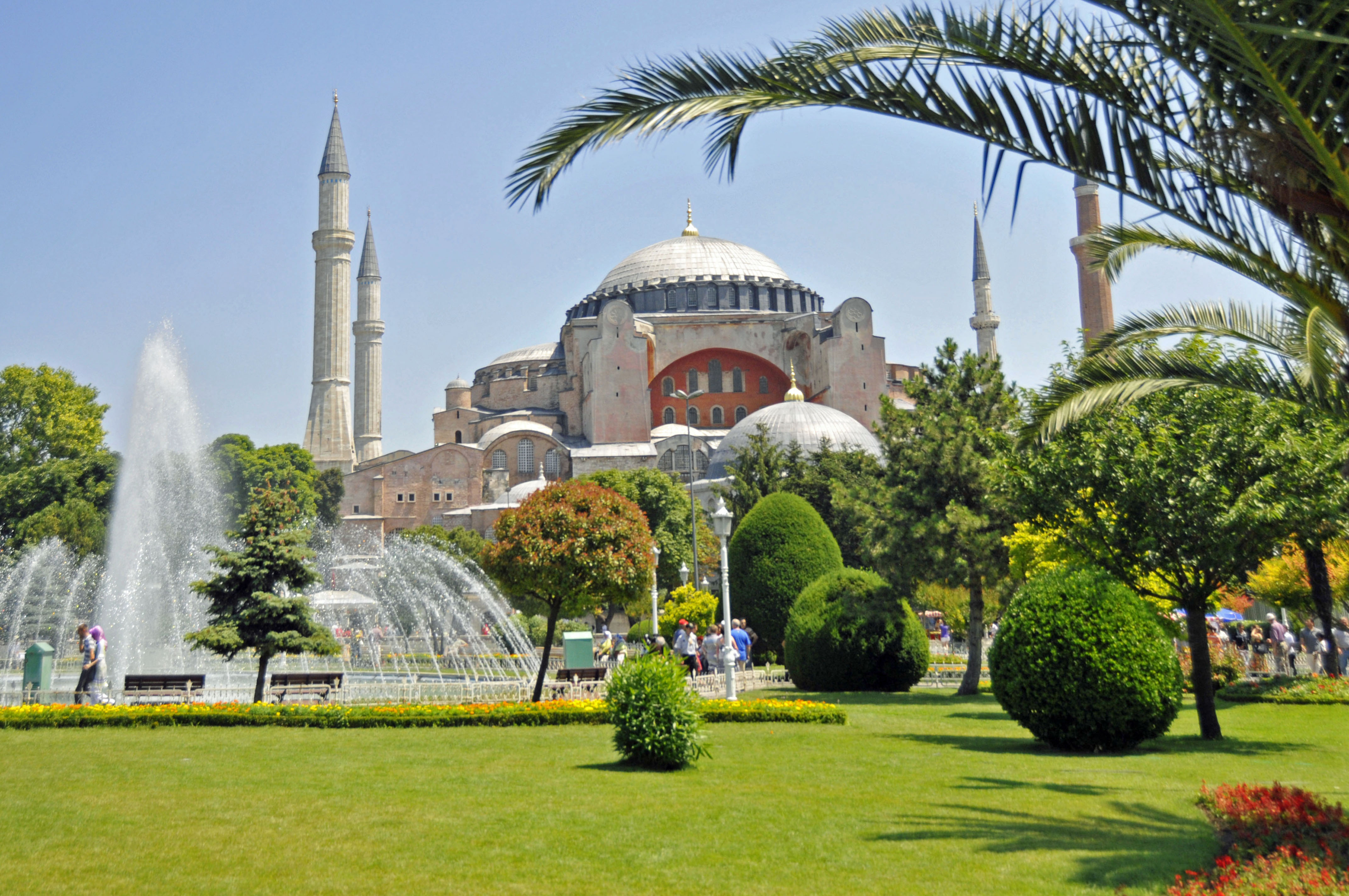
Istanbul’s Hagia Sophia is one of the world’s most intriguing buildings. Its dome is a marvel of sixth century engineering and its icons are a visible record of the area’s still tumultuous religious history.
In 527, with the Western Roman Empire in collapse, Justinian I became the Eastern (Byzantine) emperor in Constantinople. When a rebellion destroyed a small Constantinople church named Hagia Sophia (Holy Wisdom), Justinian ordered a new church built on its site. Ten thousand workers spent six years building a new Hagia Sophia to reflect Justinian’s dream of returning the Empire to its former glory. Luxurious materials, including marble columns from the temple to Artemis at Ephesus, came from throughout the Empire. A 100 feet diameter dome was supported on 40 arched windows ingeniously resting on a square base. Icons helped illiterate worshippers understand Biblical teachings. When completed in 537, Hagia Sophia became the seat of the Archbishop (“Patriarch”) of Constantinople
In 726, Emperor Leo III, likely influenced by Islamic beliefs, ordered the destruction of Hagia Sophia’s icons as forbidden “graven images.” The icons were restored in 843, when Emperor Michael III repudiated the “iconoclasts.” In 1054, the Archbishop of Rome sent an emissary to the Hagia Sophia to excommunicate the Archbishop of Constantinople, dividing Christians between Roman Catholics and Eastern Orthodox. Crusaders sent east by Catholic kings captured Constantinople in 1204 and carried icons and relics looted from Hagia Sophia back to Venice. In 1261, Byzantine forces recaptured Hagia Sophia and added golden icons incorporating a style still common in Eastern Orthodox churches.
Muslims under Mehmed II captured Constantinople from the Byzantines in 1453, renamed the city “Istanbul” and converted Hagia Sophia, at the time the largest church in the world, into a mosque. The icons were again covered, four minarets were added and a golden mihrab marked the direction of Mecca.
After the Islamic Ottoman Empire was defeated in World War, Hagia Sophia came under control of the Republic of Turkey, which uncovered the icons and made Hagia Sophia a museum. Some Turks insist that Hagia Sophia should again be a mosque, with the icons again covered. Stay tuned.


